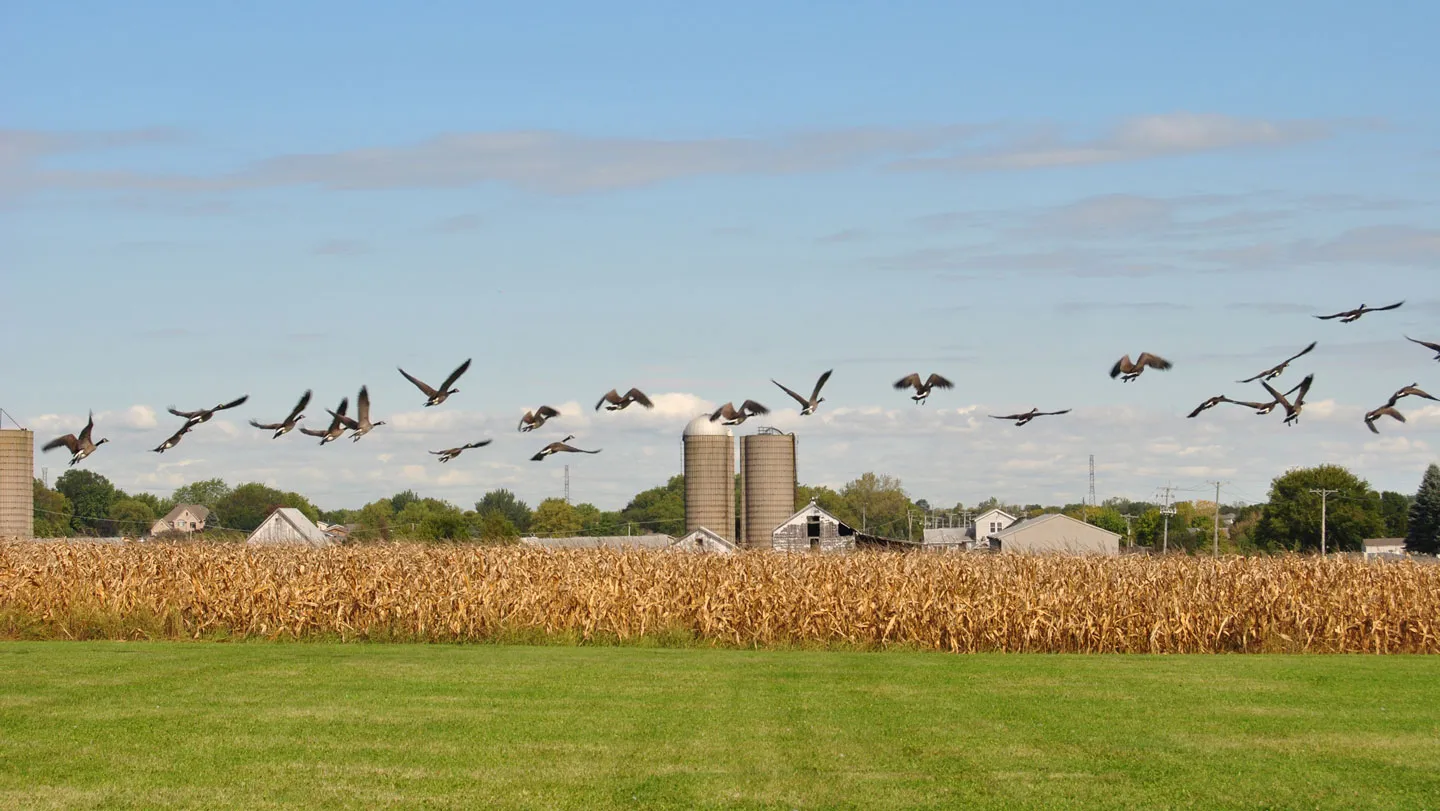Evolving Bird Flu Strains Challenge Global Efforts to Protect Farm Flocks
As avian influenza continues to mutate, keeping the virus out of commercial poultry farms is becoming increasingly difficult. Scientists warn that evolving strains, especially H5N1, are breaching biosecurity barriers and posing growing risks to food systems and public health.
A new chapter is unfolding in the global fight against avian influenza—commonly known as bird flu—and it’s one that scientists and poultry farmers have long feared. The virus, particularly the highly pathogenic H5N1 strain, is evolving faster and spreading farther than ever before. Despite stringent biosecurity protocols, it is now breaching the fences of commercial poultry farms with unsettling frequency, creating massive disruptions to food supply chains and heightening concerns of a potential zoonotic crossover.
In the past, bird flu outbreaks were typically seasonal and sporadic, mostly affecting wild migratory birds and occasionally spilling into farmed flocks. But since 2021, the virus has taken on a more persistent and aggressive profile—morphing genetically and geographically. Today’s variants not only linger longer in the environment but are also infecting a broader range of hosts, including mammals.
A Virus in Constant Mutation The H5N1 strain, first identified in the late 1990s, has gone through numerous mutations, with each new variant adapting slightly better to both avian and non-avian species. Recent genetic analyses show that the latest forms of the virus exhibit increased resilience, transmissibility, and in some cases, resistance to environmental stressors like heat and UV light. “This is no longer the same virus we were dealing with a decade ago,” said Dr.
Elena Navarro, a virologist at the European Centre for Disease Prevention and Control. “What we’re seeing is a virus that’s adapting in real time to barriers we thought were effective. ” Breaking Through Biosecurity Commercial poultry farms around the world follow strict biosecurity rules—disinfecting vehicles, restricting human movement, isolating flocks from wild birds, and enforcing quarantine zones.
Yet, outbreaks have still occurred on thousands of farms globally in the last two years, wiping out millions of birds. In the United States alone, more than 90 million birds have been culled since early 2022 due to avian flu exposure. Europe has reported similar losses.
In the UK, the government has declared bird flu a “national animal health crisis,” with commercial turkey and duck farmers hit particularly hard. “These farms are fortresses,” said Dr. Marcy Sheldon, a veterinary epidemiologist at the University of Minnesota.
“Yet the virus is finding ways in—often through indirect vectors we didn’t account for, like contaminated feed, rodents, or even airborne particulates. ” The Mammal Factor: A Dangerous Twist One of the most concerning recent developments is the growing number of mammalian infections. H5N1 has been confirmed in foxes, seals, sea lions, raccoons, and even domestic cats.
In April 2024, a dairy farm in Texas reported a case in cattle—the first such transmission in the U. S. —and one farmworker tested positive after exposure, though their symptoms were mild.
This crossover raises urgent questions about the virus’s ability to mutate into a form that could spread efficiently among humans. So far, sustained human-to-human transmission has not been observed, but scientists warn that continued mammal infections provide the virus with evolutionary training grounds. “Every time this virus infects a new species, it learns,” said Navarro.
“That learning process is what could eventually bridge the species barrier into humans in a much more dangerous way. ” Global Surveillance Struggles to Keep Up As the virus spreads, international surveillance systems are being stretched to their limits. Developing nations often lack the resources to conduct routine testing, while even wealthier countries are facing backlogs in sequencing and tracking due to the virus’s rapid geographic expansion.
“The scale of global surveillance needs to match the scale of the threat,” said Dr. Chike Okonkwo, an epidemiologist with the World Organisation for Animal Health (WOAH). “But right now, there are gaps—especially in areas where poultry farming is expanding rapidly without parallel investment in veterinary oversight.
” Economic Fallout and Food System Risks The economic impact of bird flu is staggering. In the U. S.
alone, egg prices spiked by over 50% during the height of the 2022–2023 outbreaks, causing ripple effects across the food industry. Countries like Japan and France have had to import eggs and poultry products for the first time in decades. In low-income countries, where poultry is a vital source of protein and economic security, the losses are even more devastating.
Farmers in parts of sub-Saharan Africa and Southeast Asia report entire village flocks being wiped out with little government support or compensation. Food security experts warn that continued outbreaks could undermine global protein supply chains, disrupt exports, and increase dependency on less sustainable meat alternatives. Vaccination: A Controversial Shield In response to the crisis, several nations—including China, Egypt, and Mexico—have rolled out poultry vaccination programs.
The European Union recently authorized the use of new-generation vaccines in targeted regions. However, poultry vaccination remains controversial in global trade. Vaccinated birds can still carry the virus asymptomatically, which complicates detection and creates the risk of silent spread.
Some importing nations ban poultry from vaccinated flocks, fearing hidden infections. The U. S.
has so far resisted broad vaccination, preferring containment and culling. But that stance is being reexamined amid growing economic losses. “We need to evolve our tools as the virus evolves,” said Sheldon.
“Vaccines may not be perfect, but they’re part of a broader toolkit that we can’t afford to ignore. ” Toward a One Health Approach Experts are urging a stronger global commitment to the One Health framework—a multidisciplinary strategy that connects human health, animal health, and environmental science. The idea is that managing diseases like avian flu requires synchronized efforts across agriculture, public health, wildlife conservation, and climate monitoring.
“Avian influenza isn’t just a veterinary problem—it’s a planetary problem,” said Okonkwo. “From migratory bird patterns to warming temperatures that affect virus survival, this is a systems issue. ”One Health initiatives are being piloted in Vietnam, Kenya, and Peru, where joint task forces monitor wild bird populations, manage wetland habitats, and provide rapid veterinary response training.
Public Health Preparedness: Lessons from COVID-19 The COVID-19 pandemic has shaped how nations view zoonotic threats like bird flu. Many governments are now stockpiling antivirals, expanding vaccine research, and drafting pandemic playbooks that account for non-human vectors. Still, experts caution against complacency.
“COVID taught us that once a virus leaps effectively into humans, response time is everything,” said Navarro. “We need early warning, not just rapid reaction. ” Conclusion: A Race Against Viral Evolution The global poultry industry—and the scientific community surrounding it—faces a critical juncture.
Bird flu is no longer a seasonal menace or a localized risk; it is an evolving, globalized threat that is testing the boundaries of biosecurity, surveillance, and preparedness. As the virus mutates and spreads, keeping it out of farm flocks will require more than fences and footbaths. It will demand flexible science, coordinated policy, rapid response, and perhaps most importantly, the recognition that no border can contain a virus that flies.
What happens in the henhouses of Iowa or the wetlands of Bangladesh could soon echo in hospitals and markets around the world. The time to adapt is now—before evolution leaves us behind.
9th July 2025



